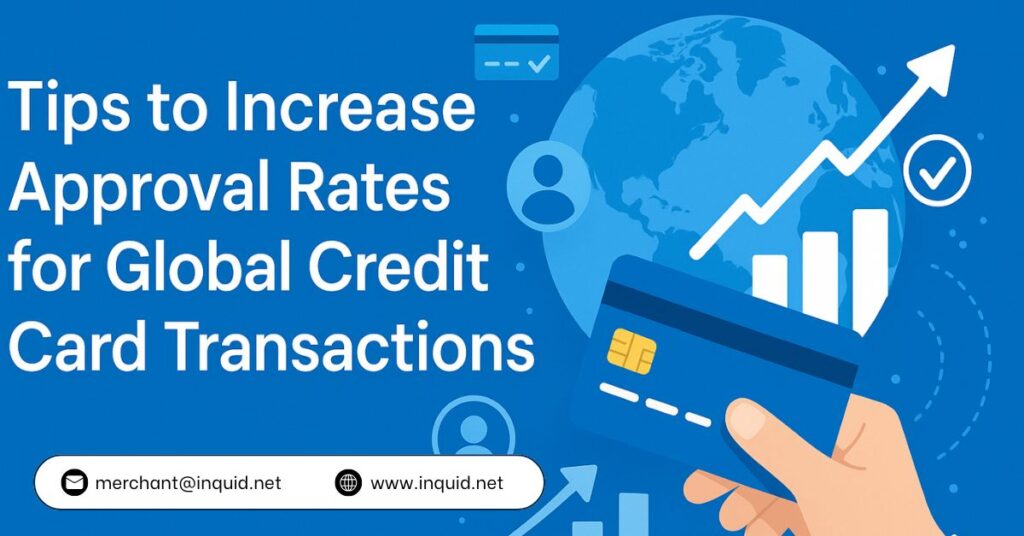
Processing international card payments isn’t always straightforward, especially if your business falls under a high-risk category. Many transactions fail due to fraud filters, mismatched information, or regional banking rules. If you’re dealing with frequent declines or pending verifications, it’s worth rethinking how your system handles global payments to increase card approval rates and keep revenue flowing.
Here are a few ways to increase approval rates and reduce transaction loss across international markets.
Understand Why Global Card Transactions Get Declined
International payments pass through multiple checkpoints, including the card issuer, the acquiring bank, card networks, fraud filters, and sometimes local compliance checks. When any part of this chain raises a red flag, the transaction is rejected.
Some of the most common causes of failed international transactions include IP and billing mismatches, lack of 3D Secure, unsupported card brands in certain countries, incomplete merchant account verification, or a high-risk score based on past activity.
Identifying these triggers early can help increase card approval rates and prevent unnecessary friction at checkout.
Choose Processors That Handle High-Risk Global Transactions
Not every payment processor is equipped to work with high-risk merchants or international traffic. Some processors reject entire categories or locations based on internal rules or bank restrictions.
Using a high-risk merchant account through a provider like inquid gives you access to banks and acquirers that support your industry and target regions. This can significantly reduce rejection rates and help you stay active, even in restricted markets.
Use a Payment Gateway That Routes Transactions by Region
International card payments are more likely to be approved when they’re routed through local or region-friendly acquiring banks. A strong international payment gateway doesn’t just support currency conversion. It also sends transactions through the best possible path based on the customer’s location and card type.
This type of smart routing improves success rates without changing your checkout or asking more from the customer.
Optimize the Checkout Page to Avoid Red Flags
Approval rates aren’t only impacted at the processing level. Your checkout page has a direct influence on whether a transaction gets accepted or flagged.
Make sure your checkout:
- Loads quickly across devices
- Matches your website’s overall layout and domain
- Clearly shows currencies and any added fees
A checkout that appears suspicious or lacks necessary verification steps increases the chance of payment rejections. For high-risk merchants, even small inconsistencies can trigger fraud checks.
Monitor Chargebacks and Payment Disputes
Chargebacks reduce trust between you and the processor. If your business history shows frequent disputes, many processors will automatically lower your approval ratio.
Use platforms like inquid’s chargeback-focused gateway to monitor, respond, and reduce chargebacks in real-time. Prevention matters more than reaction in high-risk transactions, especially when working with international customers.
Analyze Payment Data in Real Time
Payment data can reveal patterns before they affect your bottom line. If you’re seeing a rise in rejections from a specific country, time zone, or card brand, quick adjustments can help recover lost revenue.
Look for:
- Repeated declines from the same region
- Sudden changes in card type success (e.g., Visa vs. MasterCard)
- Specific banks returning frequent errors
Relying on monthly statements is too slow. Choose processors that give you access to real-time payment data and actionable insights.
Consider Multiple MIDs for Different Use Cases
If you’re dealing with high volumes or selling in multiple regions, one merchant account might not be enough. Splitting traffic across multiple MIDs lets you manage load, route transactions based on value or location, and reduce your risk exposure.
This also helps protect your approval ratio in case one account runs into temporary restrictions or technical issues.
Final Thought
Improving approval rates on global credit card transactions requires more than a basic gateway. It involves choosing the right partners, maintaining clean payment flows, and staying informed about regional risks and compliance factors.
If your business keeps facing payment rejections, it may be time to upgrade to a provider that understands high-risk global processing. inquid helps businesses stay operational with better tools, data access, and processor support.
Need expert help with your setup? Contact us for a one-on-one consultation.
FAQs
What’s a good approval rate for global credit card transactions?
For most high-risk businesses, approval rates fall between 60% and 85%, depending on the payment setup, industry, and countries involved.
Will using 3D Secure improve approval success?
Yes. 3D Secure helps verify customers and can increase trust with the issuing bank, improving your approval rate, especially for EU and Asia-based payments.
How can I check if my current processor is limiting my approvals?
Look at your recent decline codes, track regions with low success rates, and compare approval trends across time. If patterns show unnecessary declines, your setup may need to change.
